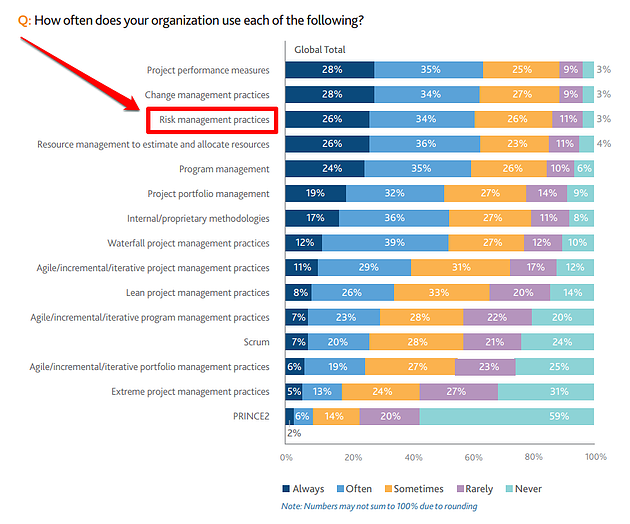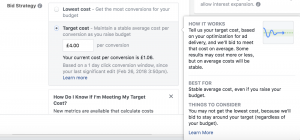— September 9, 2019
A project management checklist makes it easy to stay on top of your projects. Learn how to create one in this guide.
The start of a new project is a time of excitement and anxiety. You have an entire team waiting for your direction and stakeholders who look to you for results. You’re eager to start, but you also worry whether you’ve covered all your bases.
This is where a project management checklist comes in handy.
A project management (PM) checklist grounds your PM approach. It offers direction as well as a sanity check. A well-crafted checklist will not only show what you have to do, but will also show you what you haven’t done.
I’ll share a detailed project management checklist below. Use it to bring some order to the chaos of agency projects.
Project Management Checklists vs Methodologies
Most mature project management organizations follow some variation of a project management methodology. This methodology might be partially self-created, or it might be based entirely off an established methodology such as IPM (Integrated Project Management).
What a methodology does is give you a detailed guide to running projects. It holds your hand throughout the project management process, showing managers exactly what to do at what stage of the project.
If you’re following IPM, for instance, your project would follow this path:
Checklists are different. They’re not meant to guide you throughout the project. Rather, they’re meant to stop you from missing crucial steps.
As Atul Gawande, author of The Checklist Manifesto writes:
“Good checklists, on the other hand are precise. They are efficient, to the point, and easy to use even in the most difficult situations. They do not try to spell out everything–a checklist cannot fly a plane. Instead, they provide reminders of only the most critical and important steps–the ones that even the highly skilled professional using them could miss. Good checklists are, above all, practical.”
If a methodology is a book, a checklist is two pages of one-line items. They cover only the most critical and important steps.
Focusing on these critical steps can cut down on mistakes and missteps. If you’ve ever gone halfway through a project before you remembered a missing deliverable, you need a checklist.
In fact, research from complex, high-skilled fields such as aviation and medicine show that a checklist can cut down on errors. One study found that when checklists were used in the operating room, surgical errors dropped from 11% to 7%.
So while your agency should ideally move towards adopting its own project management methodology, you still need a checklist to complement it.
What Makes a Good Checklist?
All useful checklists have one common quality: brevity. They cover key issues in as few points as possible. A checklist that runs into several pages is a checklist that isn’t fulfilling its purpose.
This brevity forces you to focus on the most important aspects of project management. What constitutes as “mission-critical” in your projects? What can you absolutely not afford to miss?
The answer to these questions will reveal a lot about your agency and your approach to project management. What you choose to include in your checklist acts as a compass of your agency’s priorities.
Besides the standard items (such as budgeting and resource management), consider including the following:
- Any deliverable that a stakeholder has specifically requested as a top priority
- Steps or processes you’ve missed on more than one project in the past
- Processes that have constantly come up as an individual or organizational weakness during internal evaluations
It’s a good idea to limit checklist items to 15-20 at most. Organize them under headers so they’re not overwhelming.
For great examples of checklists, see the aviation and medical fields. The aviation field, in particular, obsessively follows checklists and offers a good structure to follow.
An example of a flight checklist (Image source)
With that out of the way, let’s cover some crucial items that should be on every project management checklist.
10 Steps for a Foolproof Project Management Checklist
As I noted earlier, the actual items you include in your project management checklist will depend on your priorities as a project manager and as an agency.
That said, there are some items you should include in every checklist, such as:
1. Create a vision document
Whatever you might call it – “vision statement”, “project charter”, etc. – every project needs a clear vision to tie everything together.
Capture this in the form of a vision document. This should be a wide-ranging document that covers:
- The project’s objective and intended impact
- The client’s current status in the market and how the project will change it
- A broad overview of the tools, technologies, and people you will use to deliver the results
2. Identify and understand stakeholders
Managing a project often boils down to managing stakeholders, especially if you’re doubling up as the account manager as well. A clear understanding of stakeholders, their needs, and their priorities is crucial for running a successful project.
In your stakeholder research dossier, cover the following:
- Stakeholder type (internal, external, third-party)
- Stakeholder priority and influence on the project
- Key deliverables associated with the stakeholder (in terms of approvals)
3. Specify the project’s scope
Constant change requests, unmonitored scope creep, poor understanding of deliverables – these are among the top causes of project failure.
Mitigate this problem by creating a project scope statement. This statement should identify:
- The final deliverables
- The criteria for evaluating whether a change request is within scope or out of scope
- Your process for dealing with out of scope change requests
- The decision-making hierarchy for dealing with scope change issues
- Your process for recording and tracking change requests
4. Create a project plan
As we discussed earlier, a project plan is a “plan of all plans”. It covers the broad objectives, vision, and deliverables associated with the project. And it guides you on creating plans for all other project activities (such as communication, risk management, etc.).

If you’ve followed the project management checklist above, you already have a clear understanding of the project scope and vision. Tie these together in a short project plan. This plan should at least cover:
- Project scope
- Quality standards and their evaluation (i.e. project scope quality)
- Resource plan
- Milestone schedule
5. Breakdown the work to be done (WBS)
Your project scope statement tells you what deliverables have to be created by the end of the project. But it doesn’t tell you the components you’ll need to create these deliverables.
For this, you’ll need a Work Breakdown Structure (WBS). The WBS shows you all the “work” that must be done in order to create the final deliverables.
If the final deliverable is an e-commerce website, the “work” would include a user management system, a payment gateway, and a CMS. All of this would be captured in the WBS.

Creating a WBS isn’t mandatory – lots of smaller agencies thrive without using one. But if you’re dealing with complex projects, consider it a must-have part of your project management checklist. You’ll not only know how to better map your deliverables, but will also have a better understanding of your resource requirements and scheduling.
Check out this article to learn more about the WBS and how to use it in your projects.
6. Develop a project budget
It’s a rare project that fails because the agency didn’t have the right skills to finish the job. More often than not, projects fail because the agency failed to deliver on time or within budget.
Dealing with this second problem requires creating (and sticking to) a project budget.
Budgeting is one of the most important parts of project management so consider this a must-have on your PM checklist. It’s also one of the toughest parts of your work so make sure that you understand the project thoroughly before you attempt it.
Your approach should be to go from rough estimates to a final budget.
- Estimate the cost of the project based on the objectives and goals outlined in the vision document
- Fine-tune this estimate based on the project scope statement
- Estimate the final cost based on all the components covered in the Work Breakdown Structure (WBS).
This way, you can achieve a high degree of accuracy.
7. Create a resource plan
In most agencies, you’ll rarely have complete access to all your resources for a project. More often than not, your resources – people, equipment, software – will be used on multiple projects simultaneously.
To manage effectively, you need to:
- Make sure that you have adequate resources for each project
- Make sure that resources are distributed efficiently across all projects
The latter is particularly important when dealing with people. You can’t schedule too many different types of tasks within a short time frame (you have to consider the task switching penalty). Nor can you allocate so little time on a project that the resource never truly “gets” the project’s goals.
This is where a resource plan can help. This document lists all your resources, how they are currently placed, and what how you can better utilize them on the project.
Using a tool like Workamajig can make the process much easier. Workamajig will show you exactly how much time you’ve allocated for each resource on a daily/weekly/monthly basis at a glance.

8. Create a communication plan
As a project manager, communicating clearly is a core part of your brief. No project can or should proceed until you have a rock solid communication plan in place.
This communication plan should cover every stakeholder or event you might encounter throughout a project. It should have separate provisions for identifying stakeholders and their preferences. It should also cover key events (recurring as well as one-off) you might have during the course of a project, such as kickoff meetings and progress update meetings.
9. Chart a project timeline
If overshooting the budget is one way to fail a project, falling behind on the schedule is another.
Solve this problem by creating a project timeline, also called a project schedule.
Your project timeline lists:
- All the tasks required to create each unit of “work” (refer to the WBS)
- The estimated time required to complete all these tasks
- The people who will work on each task – refer to the resource plan
You can summarize the timeline in the form of a Gantt chart.
To learn more about creating project timelines, refer to our task management guide.
10. Create a risk management plan
A key resource leaves your company halfway through the project. An important outside contractor goes bankrupt. A big loss in the client’s company cuts your budget in half.
Anything can – and often does – go wrong during a project. Yet, only 26% of project managers adopt risk management practices. This, in itself, poses a serious risk to any project.

To solve this problem, add a risk management plan to your project management checklist. This plan should identify all the current and future risks to the project, the likelihood of their occurring, and how you’ll deal with them.
For instance, your data might show that your agency has a 10% annual attrition rate. This means that on average, one member of a 10-person team might leave the company during a year long project.
You can factor this threat into your risk management plan and come up with contingencies. Maybe you can have freelancers on standby, or maybe you can distribute your work in such a way that the project doesn’t destabilize at an individual’s departure.
Over to You
Creating a project management checklist is a great way to make sure that you always start on the right foot. A well-defined checklist will help you figure out what you need to do at any stage of the project. It will also help you catch any serious lapses before they derail the project.
Business & Finance Articles on Business 2 Community
(65)







